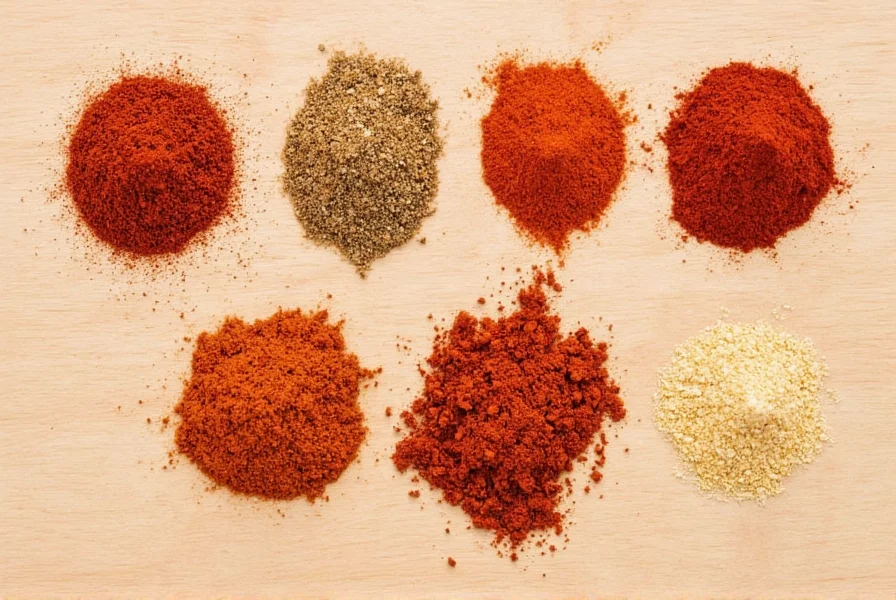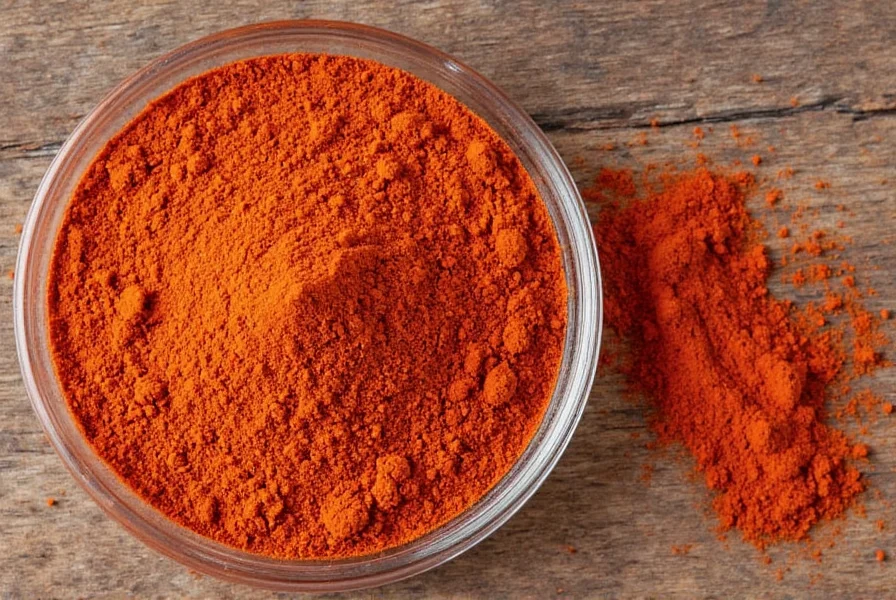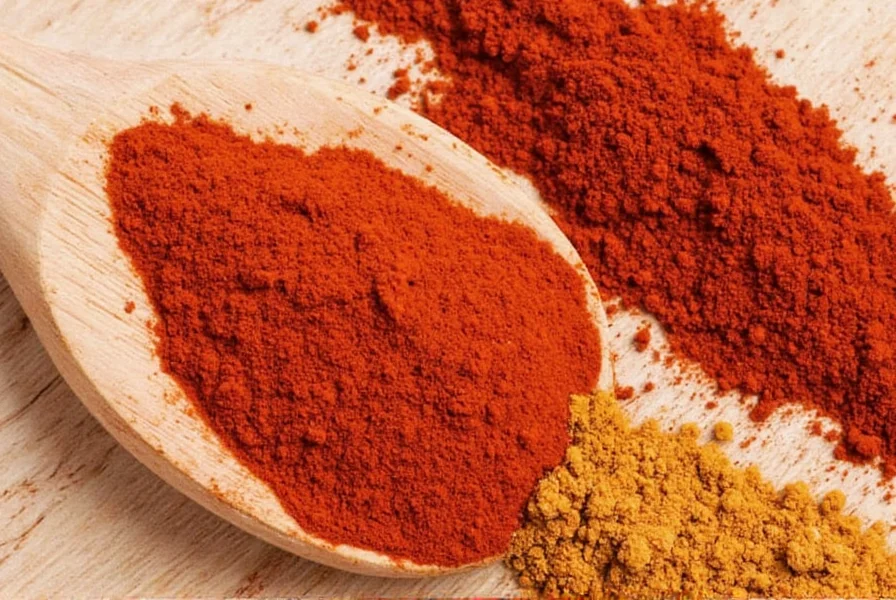Understanding what spices are in chili powder is essential for home cooks who want to control flavors in their dishes or accommodate dietary preferences. Unlike single-ingredient spices, chili powder represents a carefully balanced blend that creates the distinctive flavor profile associated with Southwestern and Mexican cuisine.
The Core Components of Chili Powder
While recipes vary, most chili powder blends share these fundamental ingredients that contribute to their complex flavor profile:
| Primary Ingredient | Percentage in Blend | Flavor Contribution |
|---|---|---|
| Dried chili peppers (ancho, New Mexico) | 60-80% | Earthy, slightly sweet base flavor with mild to medium heat |
| Cumin | 10-15% | Warm, earthy, slightly smoky depth |
| Garlic powder | 5-8% | Pungent, savory undertones |
| Onion powder | 5-8% | Sweet, aromatic foundation |
| Mexican oregano | 3-5% | Citrusy, slightly floral notes |
What spices are in chili powder: Detailed Breakdown
The specific composition of chili powder varies significantly between brands and regional traditions. Let's examine each component in detail to understand what gives chili powder its distinctive character.
Dried Chili Peppers: The Foundation
The base of any chili powder is ground dried chili peppers, typically making up the majority of the blend. Ancho peppers (dried poblanos) are most common in American-style chili powder, providing a rich, slightly sweet flavor with mild heat (1,000-2,000 SHU). New Mexico chilies offer a brighter, fruitier profile with similar heat levels. Some blends incorporate multiple chili varieties to create more complex flavor profiles.
Cumin: The Signature Flavor
No discussion of what spices are in chili powder would be complete without mentioning cumin. This earthy, warm spice typically comprises 10-15% of commercial blends and provides the distinctive "chili" flavor many associate with Tex-Mex cuisine. Cumin's strong presence differentiates American chili powder from single-ingredient chili powders used in other culinary traditions.
Garlic and Onion Powder: The Aromatic Base
These dehydrated alliums form the savory foundation of most chili powder blends. Garlic powder contributes pungency while onion powder adds sweetness. Together, they create the aromatic base that supports the other spices. Unlike fresh garlic and onion, the powdered forms distribute evenly throughout the blend and provide consistent flavor.
Mexican Oregano: The Secret Ingredient
Often overlooked but essential, Mexican oregano (Lippia graveolens) differs from Mediterranean oregano. It has a more citrusy, slightly floral profile that complements the earthiness of the chilies and cumin. This ingredient helps distinguish authentic chili powder from simpler chili pepper blends.
Regional Variations in Chili Powder Composition
When exploring what spices are in chili powder, it's important to recognize regional differences:
- Tex-Mex style: Higher cumin content, often includes garlic and onion powder
- Traditional Mexican: Primarily just ground chilies with minimal additional spices
- Commercial blends: May include anti-caking agents like silicon dioxide
- Homemade versions: Typically feature 3-5 core spices without fillers
Understanding these variations helps explain why chili powder from different sources can produce dramatically different results in cooking.
Common Additions and Substitutions
Many commercial chili powders include additional ingredients that affect both flavor and functionality:
- Paprika: Added for color and mild sweetness without significant heat
- Cayenne pepper: Included in small amounts for additional heat
- Coriander: Sometimes added for citrusy notes
- Salt: Found in some "chili seasoning" blends but not traditional chili powder
- Anti-caking agents: Such as calcium silicate or silicon dioxide in commercial products
When examining what spices are in chili powder, note that "chili seasoning" typically contains salt and sometimes other fillers, while pure "chili powder" should contain only spices.
Creating Your Own Custom Blend
Knowing what spices are in chili powder allows you to create personalized blends. A basic homemade version requires just five ingredients:
- ¼ cup ancho chili powder (or New Mexico chili powder)
- 2 tablespoons ground cumin
- 1 tablespoon garlic powder
- 1 tablespoon onion powder
- 1½ teaspoons Mexican oregano
Mix thoroughly and store in an airtight container. For hotter blends, add ½ teaspoon cayenne pepper. For milder versions, reduce the cumin slightly and increase the paprika.

Common Misconceptions About Chili Powder
Several misunderstandings persist about what spices are in chili powder:
- Myth: Chili powder is just ground chili peppers
- Reality: It's always a blend in American cooking contexts
- Myth: All chili powders have the same heat level
- Reality: Heat varies significantly based on chili varieties used
- Myth: Chili powder and cayenne pepper are interchangeable
- Reality: Cayenne is much hotter and lacks the complex flavor profile
Practical Applications and Substitutions
Understanding what spices are in chili powder helps when substitutions are necessary:
- No chili powder? Combine 2 parts paprika, 1 part cumin, ½ part garlic powder, and a pinch of cayenne
- Need less heat? Increase paprika while reducing cayenne or hotter chilies
- Want authentic flavor? Seek blends with minimal ingredients and no fillers
- Cooking tip: Bloom chili powder in oil before adding liquids to maximize flavor extraction

Reading Labels: What to Look For
When purchasing chili powder, check the ingredient list to understand exactly what spices are in chili powder for that particular brand. High-quality blends list only spices without fillers or anti-caking agents. The order of ingredients indicates proportion, with the first ingredient comprising the largest percentage.
Be aware that "chili seasoning" typically contains salt and sometimes other additives, while "chili powder" should contain only ground spices. This distinction matters for recipe accuracy and dietary considerations.
Frequently Asked Questions
Is chili powder just ground chili peppers?
No, American-style chili powder is always a blend of spices. While ground dried chili peppers form the base (typically 60-80% of the blend), it also contains cumin, garlic powder, onion powder, and Mexican oregano. Single-ingredient ground chili peppers are sometimes called 'chile powder' in Latin American cooking contexts.
What's the difference between chili powder and chili seasoning?
Chili powder typically contains only spices without salt, while chili seasoning includes salt and sometimes other additives like sugar or anti-caking agents. Always check the ingredient list, as terminology varies between brands.
Can I make my own chili powder blend at home?
Yes, making homemade chili powder is simple. Combine ¼ cup ancho chili powder, 2 tablespoons cumin, 1 tablespoon garlic powder, 1 tablespoon onion powder, and 1½ teaspoons Mexican oregano. Mix thoroughly and store in an airtight container away from light and heat.
Why does my chili powder taste different from recipe to recipe?
Commercial chili powder blends vary significantly between brands and regions. Differences in chili varieties used, cumin content, and additional spices all affect flavor. For consistent results, either stick with one brand or make your own blend using a reliable recipe.
Does chili powder contain paprika?
Many commercial chili powder blends include paprika to enhance color and add mild sweetness without significant heat. Paprika typically makes up 5-10% of the blend in products that include it, though traditional recipes may omit this ingredient.











 浙公网安备
33010002000092号
浙公网安备
33010002000092号 浙B2-20120091-4
浙B2-20120091-4